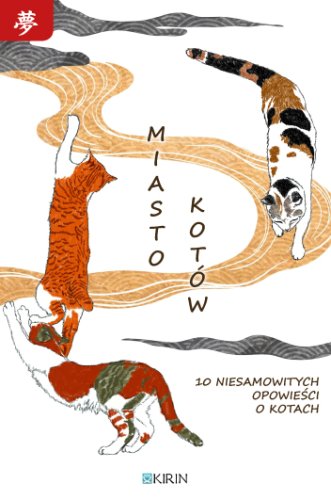
Koty należą do ulubionych zwierząt Japończyków, choć dawniej przypisywano im nadnaturalne zdolności: umiejętność zmiany kształtu, chodzenia na dwóch łapach, wypijania krwi swoich właścicieli, a także wyciągania zmarłych z grobów. Nic dziwnego, że po ich niejednoznaczny, intrygujący wizerunek od dawna chętnie sięgają pisarze. „Miasto kotów” to zbiór dziesięciu opowiadań autorstwa ośmiu japońskich autorów, którzy w różny sposób przedstawiają te zwierzęta: jako bohaterów baśni, groźne potwory, a nawet upiory czy projekcję niespokojnego umysłu. Całość poprzedza wprowadzenie, przybliżające historię kotów i legend na ich temat w Japonii, tamtejszą „kocią” literaturę, a także sylwetki pisarzy, których utwory znalazły się w tym tomie. Autorzy zbioru: Kenji Miyazawa („Żbik i żołędzie”), Kōichirō Miyahara („Opowieść o Tęczowym Kocie”), Mimei Ogawa („Staruszka i czarny kot”), Kyūsaku Yumeno („Kotka złodziejka”), Kōtarō Tanaka („Koci taniec”, „Grób prawego kota”), Fuboku Kozakai („Kotka i Muramasa”), Jūza Unno („Przezroczysty kot”) i Sakutarō Hagiwara („Czarny kot pani Warson”, „Miasto kotów”). Tłumaczenie z języka japońskiego: Michał Chodkowski
Authors
Japanese novelist, journalist, folklorist, translator from Chinese language. He wrote several historical novels and some biographies. Most famous for his samples of "kaidans", traditional mystery stories.


Yumeno Kyūsaku (native name: 夢野 久作) was the pen name of the early Shōwa period Japanese author Sugiyama Yasumichi. The pen name literally means "a person who always dreams." He wrote detective novels and is known for his avant-gardism and his surrealistic, wildly imaginative and fantastic, even bizarre narratives. Kyūsaku’s first success was a nursery tale Shiraga Kozō (White Hair Boy, 1922), which was largely ignored by the public. It was not until his first novella, Ayakashi no Tsuzumi (Apparitional Hand Drum, 1924) in the literary magazine Shinseinen that his name became known. His subsequent works include Binzume jigoku (Hell in the Bottles, 1928), Kori no hate (End of the Ice, 1933) and his most significant novel Dogra Magra (ドグラマグラ, 1935), which is considered a precursor of modern Japanese science fiction and was adapted for a 1988 movie. Kyūsaku died of a cerebral hemorrhage in 1936 while talking with a visitor at home.

Unno Jūza or Unno Jūzō (海野 十三, December 26, 1897 - May 17, 1949) was the pen name of Sano Shōichi (佐野 昌一), the founding father of Japanese science fiction. He was born to a family of medical doctors in Tokushima city. In 1928 he opened his writer’s career with The case of the mysterious death in the electric bath (Denkifuro no kaishijiken). During the Pacific War he wrote a great number of science-fiction novels, remaining in Tokyo throughout the air raids.[1] Japan’s defeat in World War II was for him a hard blow, and Unno spent the last years in his life in a deeply prostrated state. Unno's scientific work was influenced by that of Nikola Tesla. The captain, Okita Juzo of Space Battleship Yamato was named so as a tribute.

His name is written as 宮沢賢治 in Japanese, and translated as 宮澤賢治 in Traditional Chinese. Kenji Miyazawa (1896-1933) was born in Iwate, one of the northernmost prefectures in Japan. In high school, he studied Zen Buddhism and developed a lifelong devotion to the Lotus Sutra, a major influence on his writing. After graduating from an agricultural college, he moved to Tokyo to begin his writing career but had to return home to care for a sick sister. He remained in his home in Iwate for the rest of his life. One of his best-known works is the novel Night on the Galactic Railroad, which was adapted into anime in the late twentieth century, as were many of his short stories. Much of his poetry is still popular in Japan today.